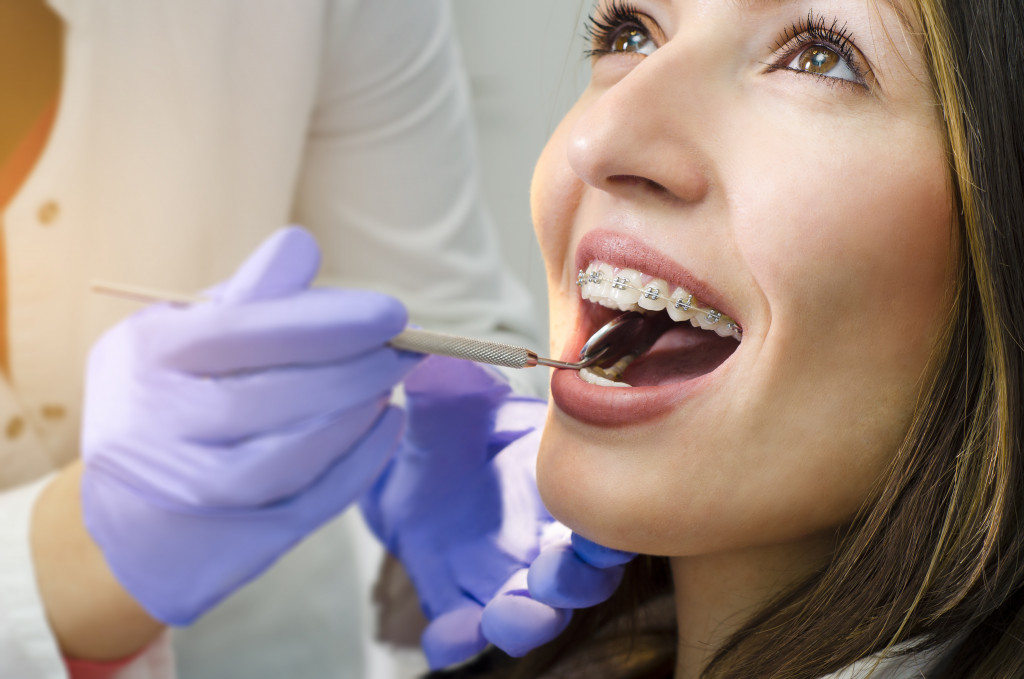Disclaimer: Mladysrecords. This site provides fashion and lifestyle content for informational purposes only.
The need for teeth alignment comes next to dental decay solutions. Americans can’t deny how obsessed they are with having the perfect smile that children, teens, and adults alike wear braces.
An orthodontist would usually point to ages six to 14 being the ideal time to get braces. This is because kids at this age range are in their physically formative phase, hence, receptive to changes. Most middle- or high-school kids would have to endure the stigma of being the nerd, which a mouth full of metal symbolizes, but just glowing up in the later years. Does it sound like the story of someone you know?
Adults Can Wear Braces, Too
But if you’re already an adult and realize you want flawless teeth and a smile or recommended by your dentist for other reasons, then you might now be one of those adult brace-wearers, although there’s nothing wrong with it as long as you have healthy teeth and jaw bone.
How long people should wear their braces depends on the severity of their dental problem and particular treatment. Usually, the recommended duration would be between 18 months and three years. Anything more than that may require a second opinion.
Historically, in the ’90s, dentists would be so lucky as to have an adult patient wanting to get braces, but nowadays, most adults in the U.S. wouldn’t mind getting one. The length of time they would have to endure the inconvenience of a dental fix cannot compare to the lifetime of comfort and confidence it can give them after.
A span of possibly three years wearing braces is shorter than a lifetime of having healthy teeth and a beautiful smile. And here starts the struggle toward wearing braces all day and night. For them to work according to your expectations, you’ll need to know how they’re properly used and cared for every day. You never know; you might be handling them the wrong way.

Survive the First Week
Before anything else, you’ll need to get through the first week, which is the period of the most discomfort. There may not be pain but some minor discomfort like sensitivity. Simply kick it with an over-the-counter drug.
Make sure you have stocked up on foods and drinks that can be friendly with your sensitivity. Only get back to your favorites after you’ve finally gotten used to the feeling of brackets and wires.
For the first week, you’re better off eating soft bread and cheeses, stew and soup, fork-tender meats, tofu, beans, hummus, soft-cooked fish or fish sticks, pudding, egg salad, ripe fruits, and more. Saltwater rinses will do the job of lessening the irritation inside your cheeks and lips too. Mix a teaspoon of salt in warm water, and then swish it around. If it works for you, repeat it many times in a day.
Know as well that it’s normal to feel your teeth loosen up. They do this to move into new positions. Real emergencies include broken or loose brackets and poking wire.
Create the Right Habits for Cleaning Your Braces
From now on, get into the proper habits of handling them—managing the pain, keeping them clean, and many others.
Cleaning the braces
With braces, your toothbrush should be soft-bristled. After every meal, brush your teeth, and remember not to use too much toothpaste. Floss, then finally, gargle mouthwash every night.
The proper technique for brushing
At a 45 degree angle, the bristles of your toothbrush should face toward your gum line. Brush each tooth in small circles. Repeat the circular brushing on each tooth for both the front and back, upper and lower. On the chewing surfaces, brush back and forth. Finally, gently brush your tongue to clear away any bacteria.
The right way to floss with a threader
Flossing with braces is different since you have archwires to handle. An archwire can hinder the floss from getting right between the teeth. But floss threader can help with this.
To do so, take a thread of floss (1.5 feet), and then push the thread to the floss threader’s loop. Now you can slide the floss between your teeth and the archwire. All the way from your teeth down to gums, floss in an up and down motion. You can now pull the threader to get the floss off. Finally, repeat the process for each tooth.
Get Regular Checkups
When wearing braces, you are more prone to plaque buildup and tartar accumulation, which is why you should be more apt about going to your orthodontist at regular times.

